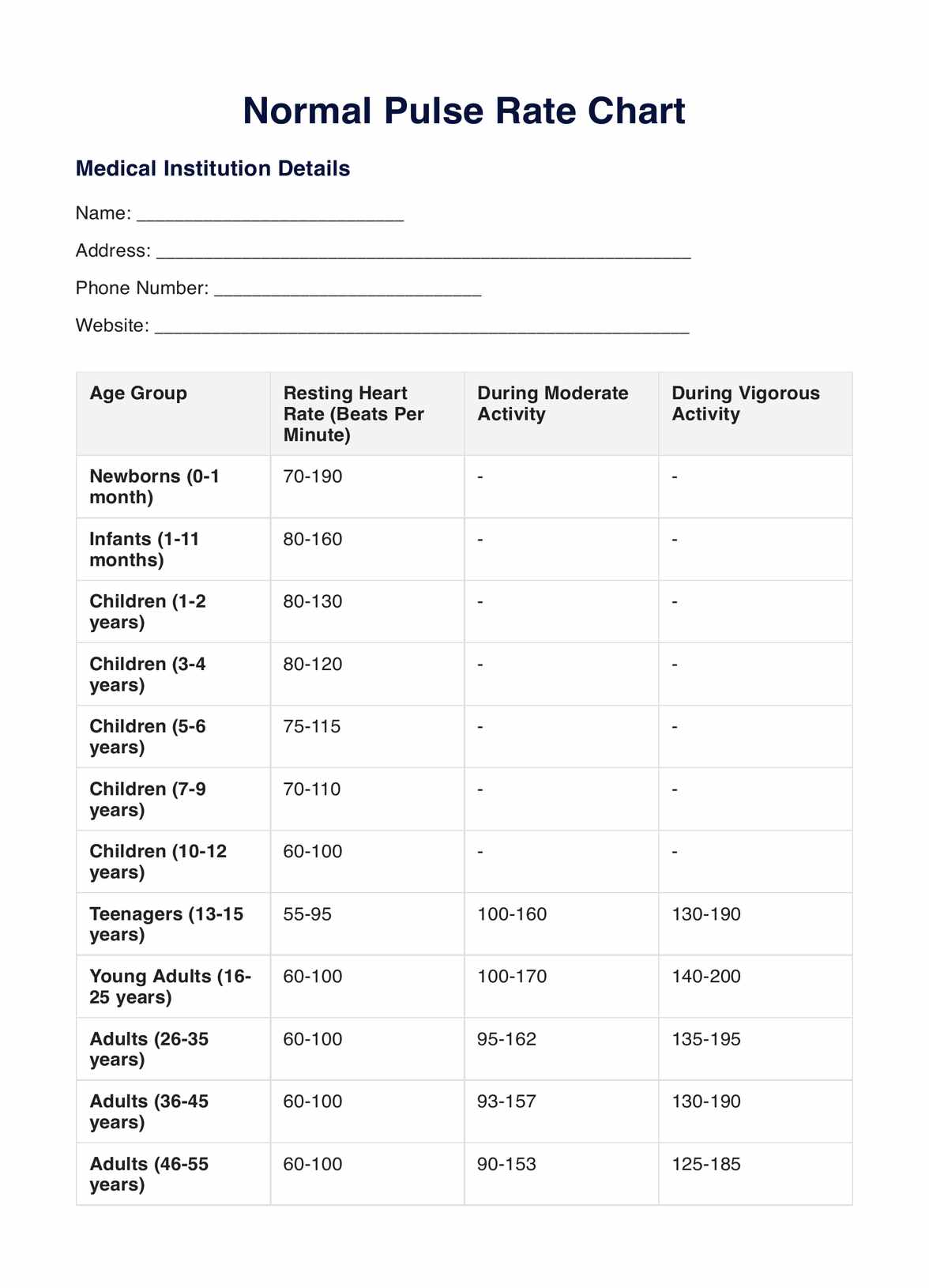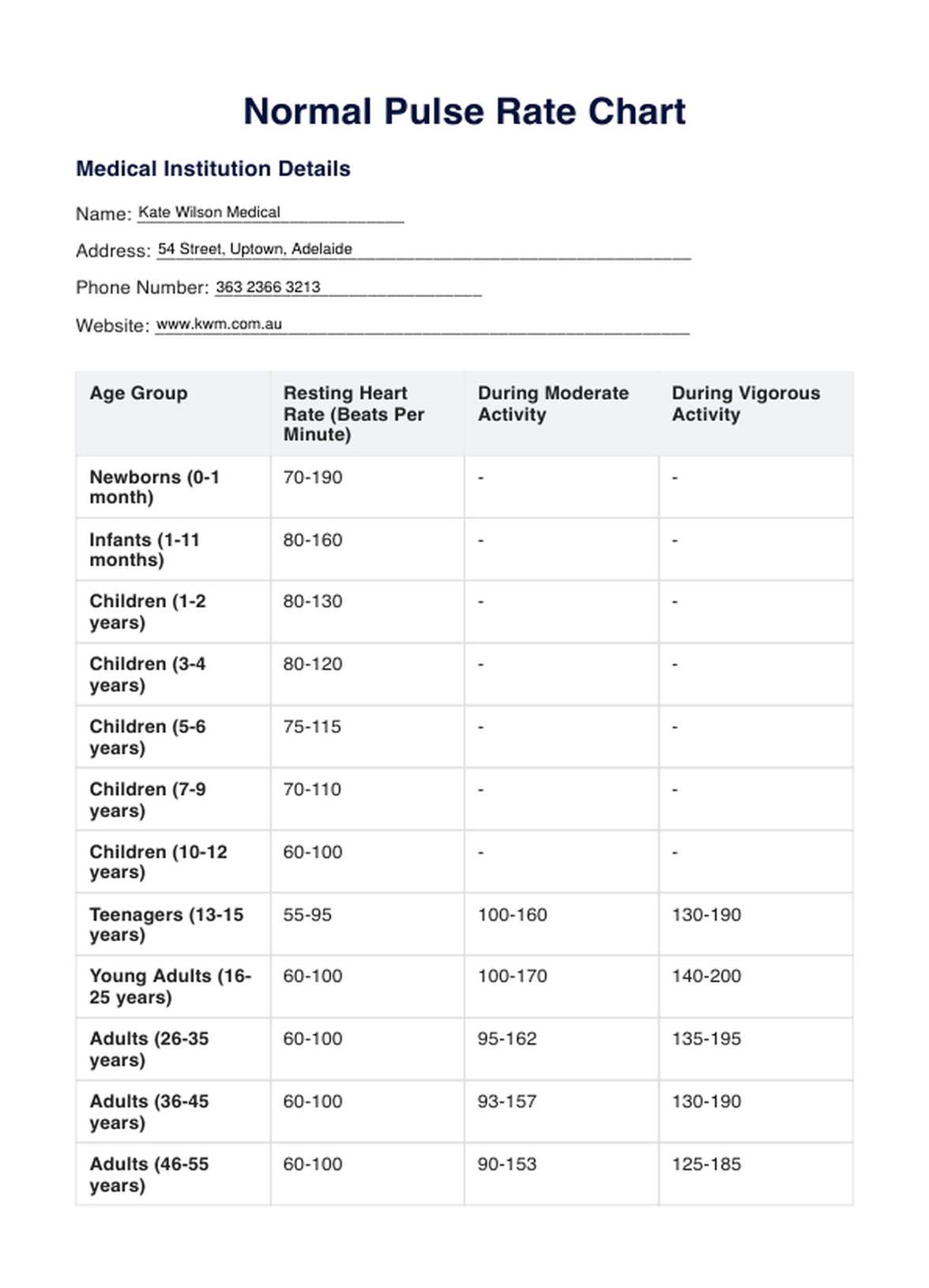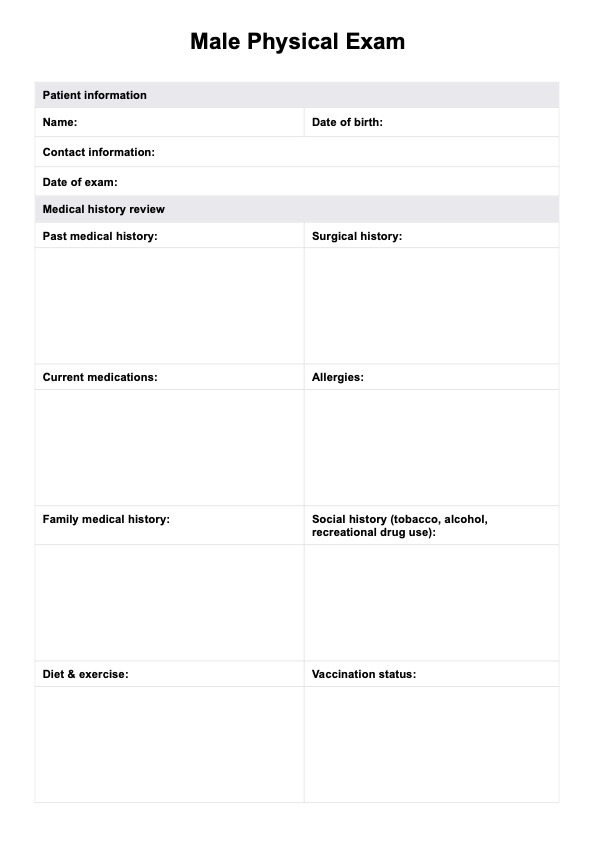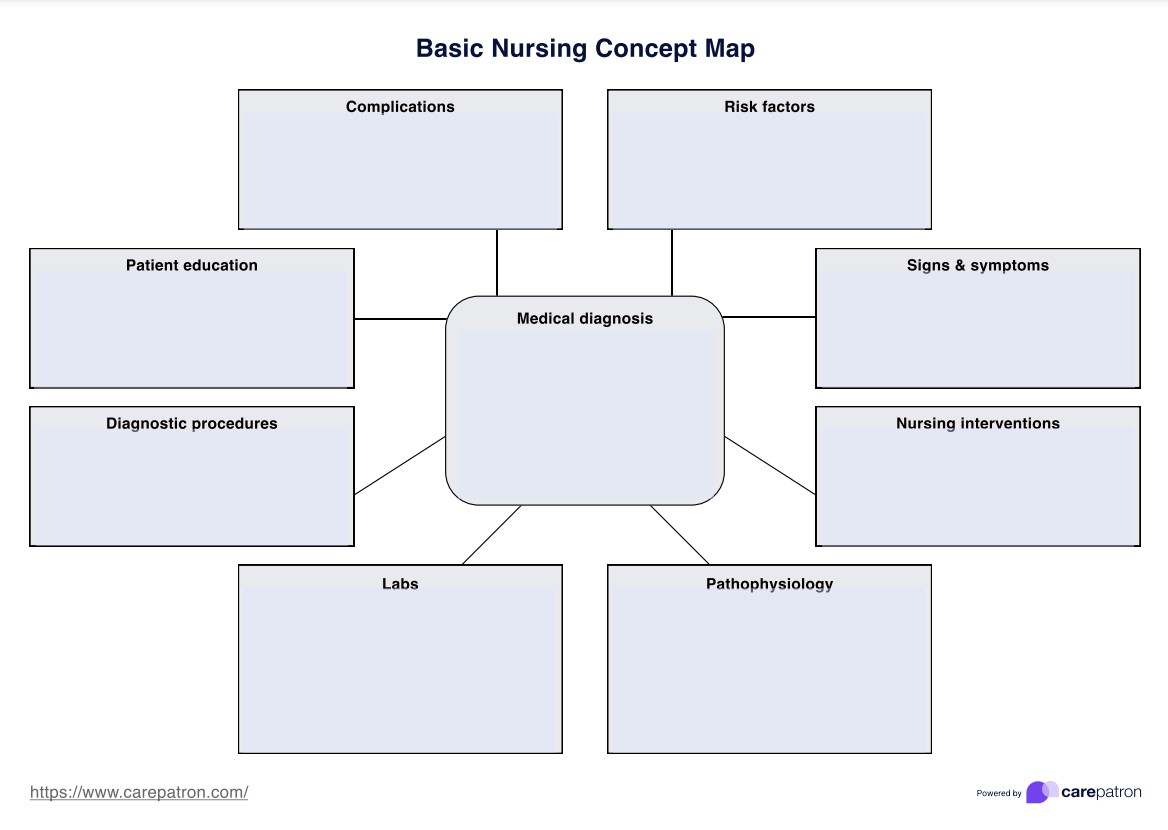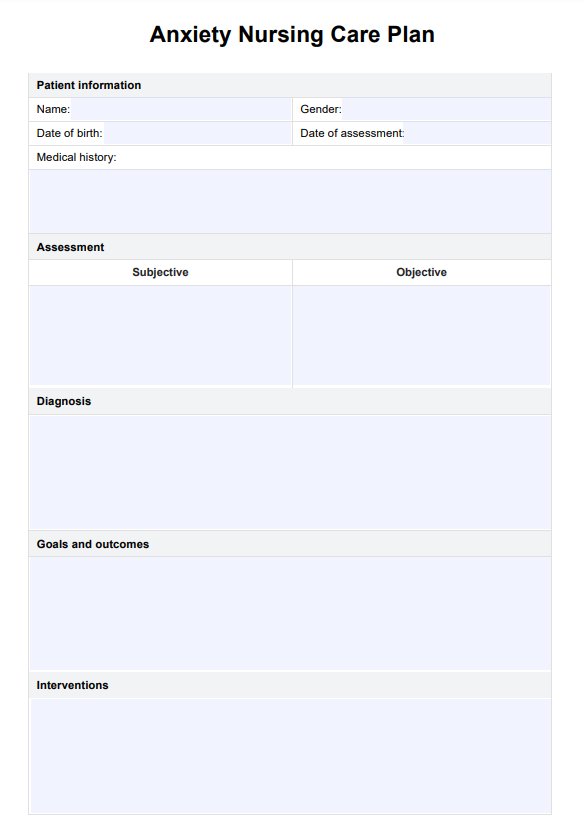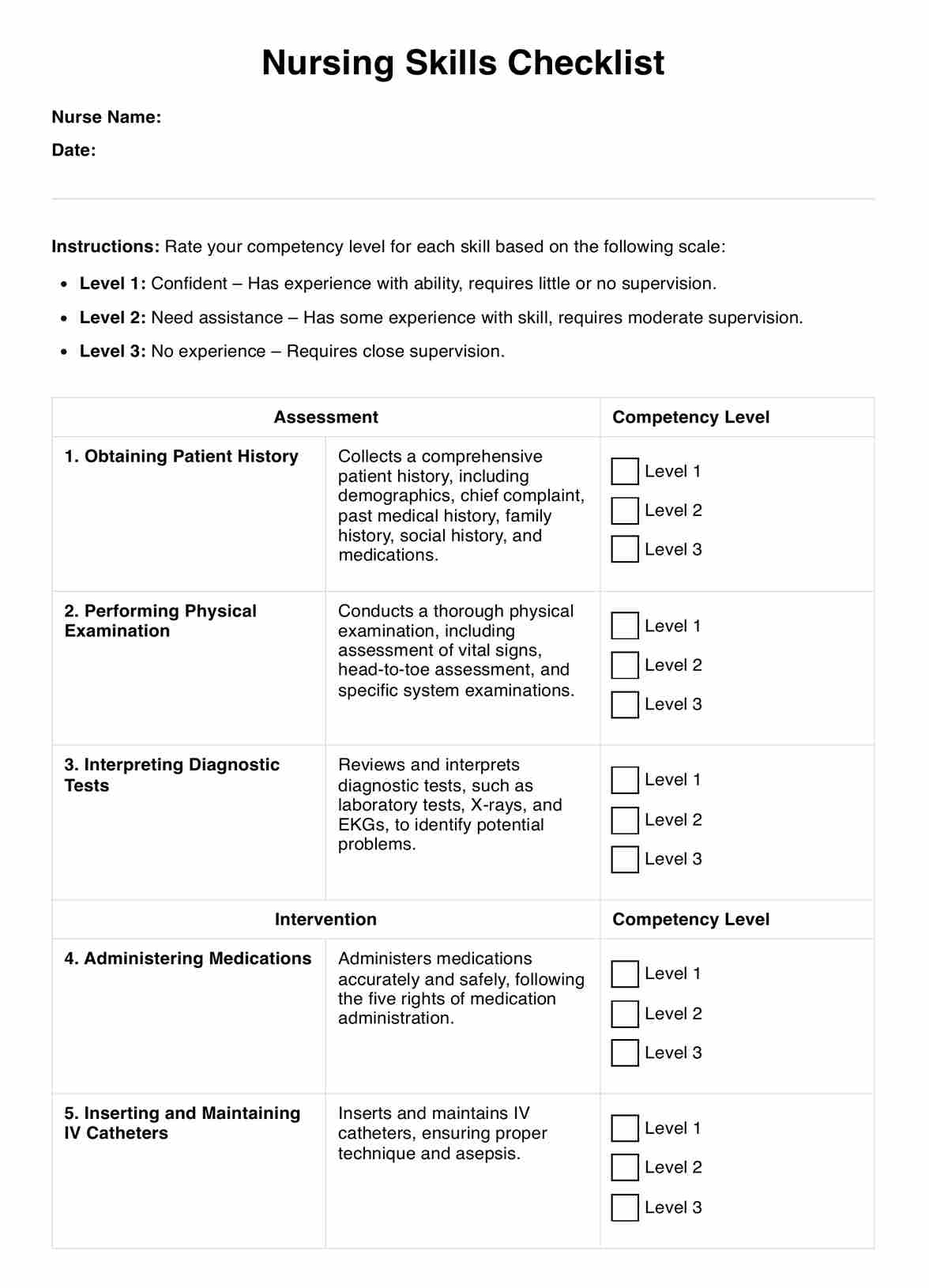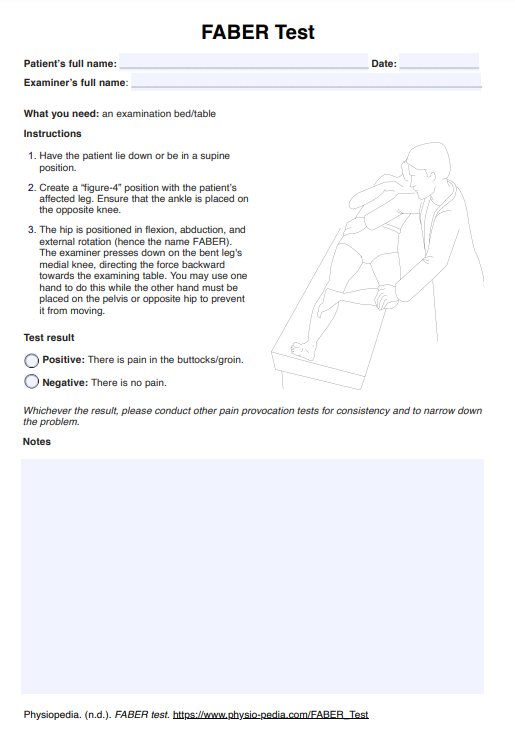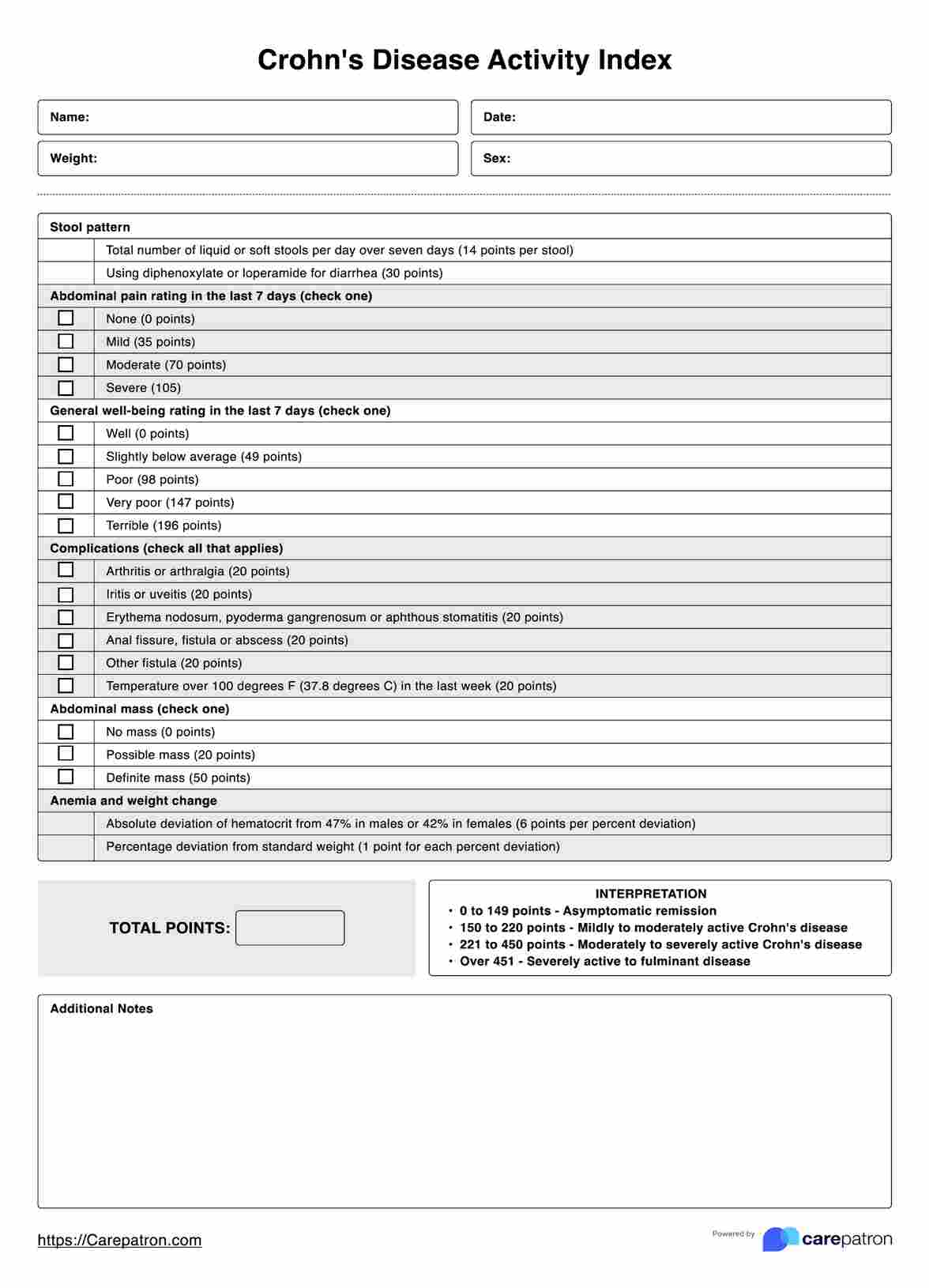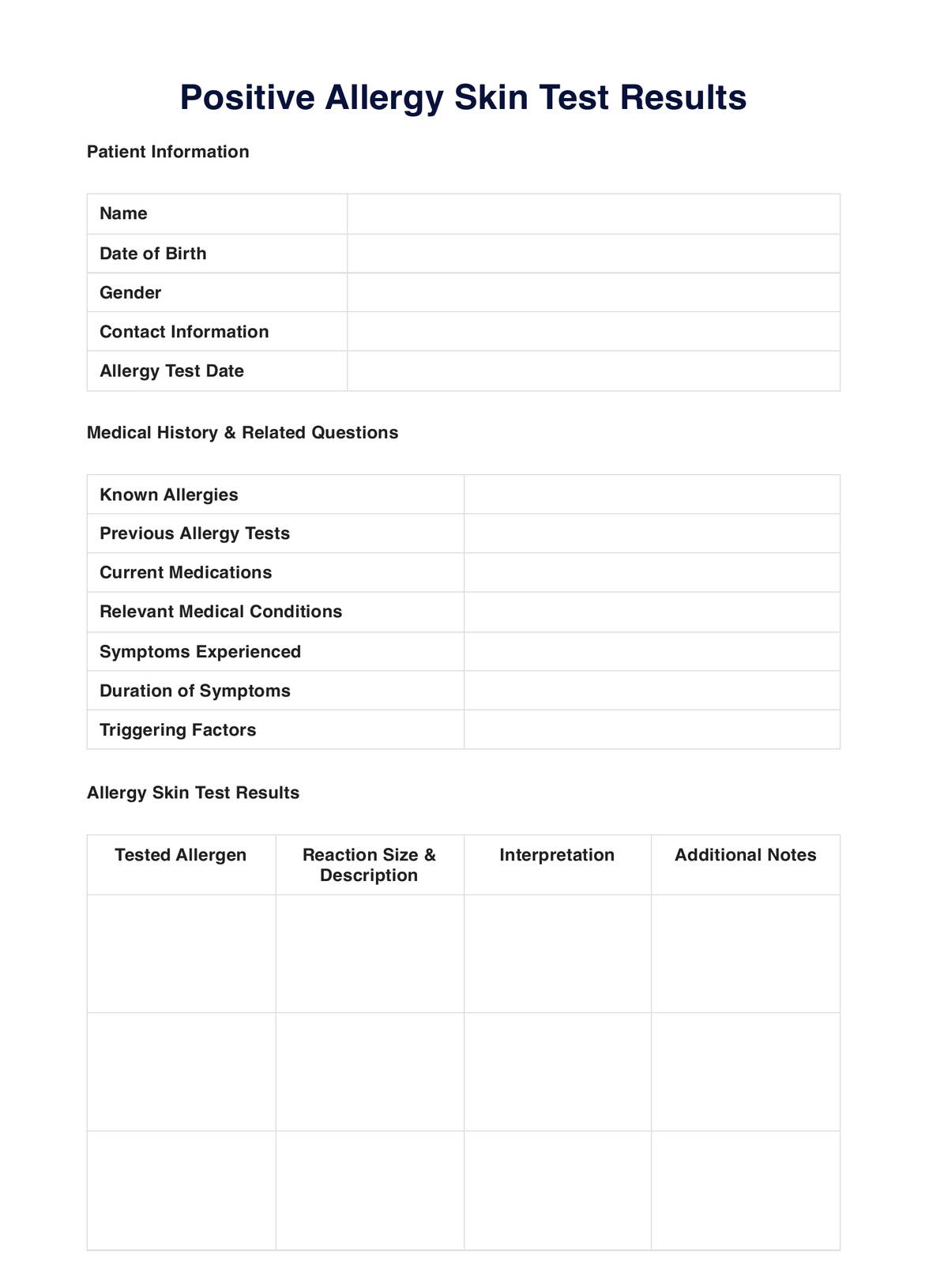Normal Pulse Rate
Explore our Normal Pulse Rate Chart to monitor your heart health effectively, suitable for all ages and fitness levels.


What is a Normal Pulse Rate Chart?
A Normal Pulse Rate Chart outlines typical heart rate ranges, primarily categorized by age groups and varying levels of physical activity, including resting, moderate, and intense exercise states. The primary function of this chart is to offer a benchmark against which individuals can compare their heart rates.
For adults, a normal resting heart rate usually ranges between 60 to 100 beats per minute, but these values can vary depending on factors like age, fitness level, and overall health. For instance, trained athletes may have a resting heart rate as low as 40 beats per minute, indicating their high cardiovascular efficiency.
Beyond fitness and athletic training, the Normal Pulse Rate Chart is invaluable in a clinical setting. It assists healthcare professionals in diagnosing and monitoring conditions related to cardiovascular health. Abnormal heart rates, whether too fast (tachycardia) or too slow (bradycardia), can be early warning signs of health issues that require further investigation.
Additionally, for individuals managing conditions such as hypertension or heart disease, regularly monitoring their heart rate in conjunction with this chart can be a crucial aspect of their health regimen. It helps determine the effectiveness of medications and lifestyle changes to improve heart health.
In personal health and fitness, the chart is a guide to help individuals tailor their exercise intensity. It ensures that activities are conducted within safe heart rate zones, maximizing health benefits while minimizing risks.
Overall, the Normal Pulse Rate Chart is a versatile and practical tool, aiding in understanding and monitoring one's cardiovascular health, essential for medical professionals and anyone interested in maintaining a healthy lifestyle.
Normal Pulse Rate Template
Normal Pulse Rate Example
How Does it Work?
Our Printable Normal Pulse Rate Chart is an easy-to-use tool for monitoring heart health. The chart, typically available for download from reputable health websites, serves as a guide to help individuals understand their heart rate readings about established norms. Here are the steps to effectively use this chart:
Step 1: Obtain the Chart
First, download a current and comprehensive Normal Pulse Rate Chart from a trusted source. Ensure the chart includes various ages and activity levels to cater to different users.
Step 2: Familiarize with the Chart
Spend time understanding the layout of the chart. It generally categorizes normal pulse rates based on age groups and different physical activity levels, such as resting (passive), moderate, and vigorous (intense) activity. Each category will have a range of heart rates considered normal for that segment.
Step 3: Measure Your Pulse
Measure your pulse rate. You can do this manually by feeling your pulse at your wrist or neck and counting the number of beats in 60 seconds. Alternatively, use a heart rate monitor for a more accurate reading. Ensure you rest for at least 5 minutes before measuring your resting heart rate.
Step 4: Compare Your Reading
Once you have your pulse rate, compare it with the corresponding category in the chart. For instance, if you're a 30-year-old who has just measured your resting heart rate, look for the 'Resting' column under the 30-year age bracket to see if your heart rate falls within the normal range.
Step 5: Interpret the Results
If your heart rate falls within the range specified on the chart for your age and activity level, it is considered normal. A heart rate consistently outside this range may warrant a consultation with a healthcare professional, especially if accompanied by other symptoms.
Our Printable Normal Pulse Rate Chart is a straightforward and effective tool for anyone looking to monitor their cardiovascular health. It's especially beneficial for those actively managing their fitness levels, monitoring their heart health, or anyone curious about their general well-being.
When Would You Use This Chart?
A Normal Pulse Rate Chart is a versatile tool, useful in various scenarios and by different practitioners and individuals. Its primary function is to provide a reference for a standard range of heart rates based on age and activity levels. Here are some key situations where this chart proves particularly useful:
- In Clinical Settings for Patient Monitoring: Healthcare professionals frequently use this chart to monitor their patients' heart health. It is imperative in managing patients with cardiovascular conditions, such as heart disease or hypertension. Doctors can make informed decisions about diagnoses, treatment plans, and further testing by comparing a patient's heart rate to the normal ranges on the chart.
- For Athletes and Sports Coaches: Athletes and their coaches and trainers can use the chart to optimize training regimens. Understanding whether the heart rate falls within a normal range during different exercise intensities helps adjust training methods to improve cardiovascular fitness and performance without overexerting the heart.
- Managing Heart-Related Health Issues: Individuals with heart conditions or those at risk of developing such conditions can use the chart to monitor their heart rates regularly. This is crucial in managing existing conditions and preventive health care, allowing for timely medical intervention when abnormal rates are observed.
- For Fitness Enthusiasts and Personal Trainers: Those engaged in fitness activities, including personal trainers, can utilize the chart to tailor exercise programs. By ensuring that the heart rate stays within a healthy range during different activity levels, they can maximize the health benefits of exercise while minimizing the risk of cardiac stress.
- In Educational and Awareness Programs: The chart is also valuable in educational settings, where it can be used to teach about heart health and the importance of maintaining a normal heart rate. It raises awareness about how lifestyle factors like exercise and stress management influence heart health.
The Normal Pulse Rate Chart application spans clinical diagnostics to fitness planning and public health education, making it a valuable resource for many users.
What do the Results Mean?
Interpreting the results from the Normal Pulse Rate Chart is crucial for assessing cardiovascular health. Often free, this chart provides benchmarks for a normal heart rate at various activity levels and age groups. Here's what the results typically indicate:
- Normal Resting Heart Rate: If your resting heart rate falls within the chart’s normal range (usually 60-100 beats per minute for adults), it generally indicates good cardiovascular health. This suggests that your heart is functioning efficiently, maintaining adequate circulation without undue stress.
- Elevated Resting Heart Rate: A consistently high resting heart rate may indicate various health issues, such as high blood pressure, heart disease, or excessive stress. Factors like caffeine, dehydration, or lack of physical fitness can also influence it. Persistent elevated rates warrant a consultation with a healthcare provider.
- Lower than Normal Resting Heart Rate: A resting heart rate lower than the normal range, particularly if you’re not a trained athlete, might indicate bradycardia. This condition can lead to dizziness, fatigue, and, in severe cases, heart complications. It’s important to seek medical advice to determine the underlying cause.
- Response to Physical Activity: The chart can also help assess how your heart rate responds to physical activity. An appropriate increase in heart rate during exercise, followed by a gradual return to normal, is a sign of good heart and overall health. Conversely, an inadequate increase in heart rate or a prolonged recovery time post-exercise could indicate cardiovascular or respiratory issues.
- Age-Related Considerations: It’s important to note that normal heart rates can vary with age. For instance, children tend to have higher heart rates than adults. The chart typically accounts for these variations, providing age-specific ranges.
Our Free Normal Pulse Rate Chart results are a window into your heart's efficiency and overall health. While this chart is a valuable tool for monitoring heart rate, it should be complemented with other health assessments and medical advice, especially if abnormalities are detected.
Research & Evidence
The significance of the Normal Pulse Rate Chart is deeply rooted in decades of medical research that underscores the importance of heart rate monitoring in evaluating cardiovascular health. The chart's development is a culmination of extensive studies that have established a clear correlation between heart rate and overall health, fitness levels, and potential cardiac conditions.
- Historical Development: The concept of tracking heart rate dates back to the early 20th century, with advancements in medical technology leading to more precise measurements and understandings of what constitutes a 'normal' heart rate. Over the years, researchers have identified average heart rates for different age groups, laying the foundation for the modern Normal Pulse Rate Chart.
- Clinical Research: Numerous clinical studies have reinforced the value of regular heart rate monitoring. For instance, the landmark Framingham Heart Study, which began in 1948, provided critical insights into the risk factors for heart disease, highlighting heart rate as a key indicator of cardiovascular health. This study, among others, has been instrumental in shaping guidelines on heart rate monitoring.
- Heart Rate Variability (HRV) Research: More recent research into Heart Rate Variability (HRV) has further emphasized the importance of understanding heart rate patterns. HRV studies have shown that variations in heart rate can provide insights into autonomic nervous system function and overall heart health, reinforcing the value of the Normal Pulse Rate Chart as a tool for monitoring these variations.
- Fitness and Exercise Science: In the realm of exercise and fitness, research has shown that monitoring heart rate during physical activity is crucial for assessing exercise intensity and cardiovascular fitness. This has important implications for athletes and the general population, guiding safe and effective exercise regimens.
Overall, the research supporting the Normal Pulse Rate Chart is extensive and multidisciplinary, encompassing clinical cardiology, exercise science, and preventive medicine. The chart is not just a simple tool for measuring heart rate; it is vital in health monitoring and cardiovascular risk assessment.
References
Achten, J., & Jeukendrup, A. E. (2003). Heart rate monitoring: applications and limitations. Sports Medicine, 33(7), 517-538.
Dawber, T. R., Meadors, G. F., & Moore Jr, F. E. (1951). Epidemiological approaches to heart disease: the Framingham Study. American Journal of Public Health and the Nation's Health, 41(3), 279-286.
Shaffer, F., & Ginsberg, J. P. (2017). An overview of heart rate variability metrics and norms. Frontiers in Public Health, 5, 258.
Commonly asked questions
Healthcare providers, athletes, fitness trainers, and individuals monitoring their heart health.
People use Normal Pulse Rate Charts during health check-ups, fitness assessments, and regular health monitoring.
By comparing an individual's measured pulse rate to the ranges given on the chart.
Measuring and comparing pulse rates can be done in a few minutes.

.jpg)
